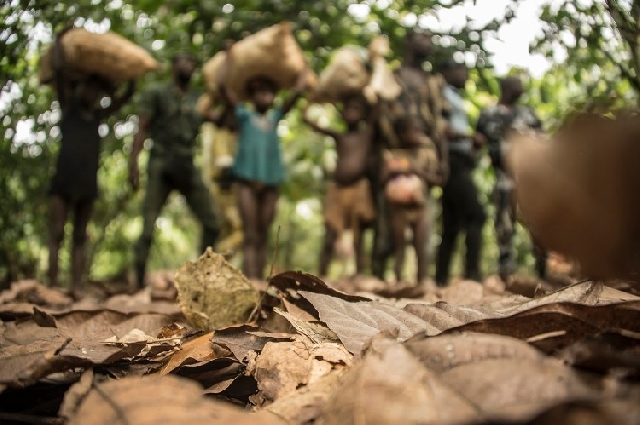World Day Against Child Labour: Over 1.1 million children in Ghana engaged in child labour – GSS
 More of the children who are involved in different forms of work are males 56%
More of the children who are involved in different forms of work are males 56%
The 2023 Annual Household Income and Expenditure Survey has revealed alarming statistics about child labour in Ghana.
According to the survey, over 1.1 million children aged 5 to 17 years were involved in various forms of work during the fourth quarter of 2023, representing one in every ten children (10.3%) in this age group.
Among these children, approximately 893,000 are engaged in paid employment.
The Ghana Statistical Service (GSS) highlighted these findings in a statement issued on June 3 to mark the World Day Against Child Labour, observed annually on June 12th.
This year’s theme: “Let’s Act on Our Commitments: End Child Labour,” calls for intensified efforts to eliminate child labour and protect children's rights.
“More of the children who are involved in different forms of work are males (56%). Almost half a million (458,443) of these working children are not attending school, comprising 68,500 who have never attended school and 389,943 who attended school in the past,” the GSS statement revealed.
The data shows a stark contrast between urban and rural areas, with urban regions accounting for 28% (309,199) of working children, while rural areas have a significantly higher proportion at 72% (795,175).
Regionally, the Ashanti Region (13.6%) has the highest percentage of working children, followed by Bono East (12.1%) and the Northern Region (11.8%). In contrast, the Ahafo Region (0.8%), Greater Accra (1.6%), and Western North (1.8%) have the lowest percentages of working children.
The types of work children are engaged in vary, with 35.4% working as family help, 31.2% in farmwork, 11.7% as unpaid trainees, and 7.3% in production for their own use. Additionally, 6.2% are involved in non-farm work, 5.3% in wage work, and 2.9% in domestic, non-productive agriculture, voluntary work, or apprentice work.
The survey also provided insights into the occupational distribution of child workers. Elementary occupations predominate, accounting for 60.4%, followed by craft and trade-related work (19.8%) and skilled agricultural, forestry, and fish-related work (17.7%). Service and sales workers (1.7%), plant and machine operators (0.2%), and managers (0.1%) constitute the smallest categories of working children.
The services sector employs the majority (91.7%) of working children, while agriculture and industry engage 4.8% and 3.6%, respectively. Moreover, 80.4% of working children are involved in contributing family work in both agricultural and non-agricultural sectors.
Unpaid apprenticeships are the second most common employment status for children at 11.7%. Additionally, 1.9% of working children are self-employed, 0.5% are paid employees, and 4.9% fall under other employment categories.
Source: classfmonline.com/Elikem Adiku
Trending News

NACOC to step up surveillance at entertainment joints during festive season
05:28
Agona Swedru Fire Service takes fire safety education to the streets
06:09
Legal Education Reform Bill, 2025 details miscellaneous and transitional provisions
09:57
Asantehene's mediation efforts on Bawku conflict praised by Progressive Alliance of Ghana
09:40
Minister for Interior unveils new National Signals Bureau Regional Command in Sunyani
04:12
Supreme Court affirms Alpha Beta Education Centre’s title to Akokorfoto lands
05:59
Festive season fare hikes deepen commuter woes in Accra
09:46
Nationwide fire extinguisher verification for vehicles begins today — GNFS
09:31
Ghana National Fire Service responds to mass breathing difficulty incident at CMB
04:58
A time is coming, we will have a female IGP- Prophet Ask-Ackrong
21:18



